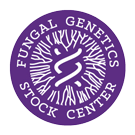Strain: Neurospora crassa
FGSC #3265
Reporting Genes: scot
Species: crassa
Allele: P7806(t)
Alternate Strain Number: 484
Mutagen: S
Depositor: DDP
Linkage Group: VR
Mating Type: A
Genetic Background: M
Opposite Mating Type: 3266
ref1: Perkins & Bjorkman 1978 N.N. 25, https://doi.org/10.4148/1941-4765.1753
Genes
